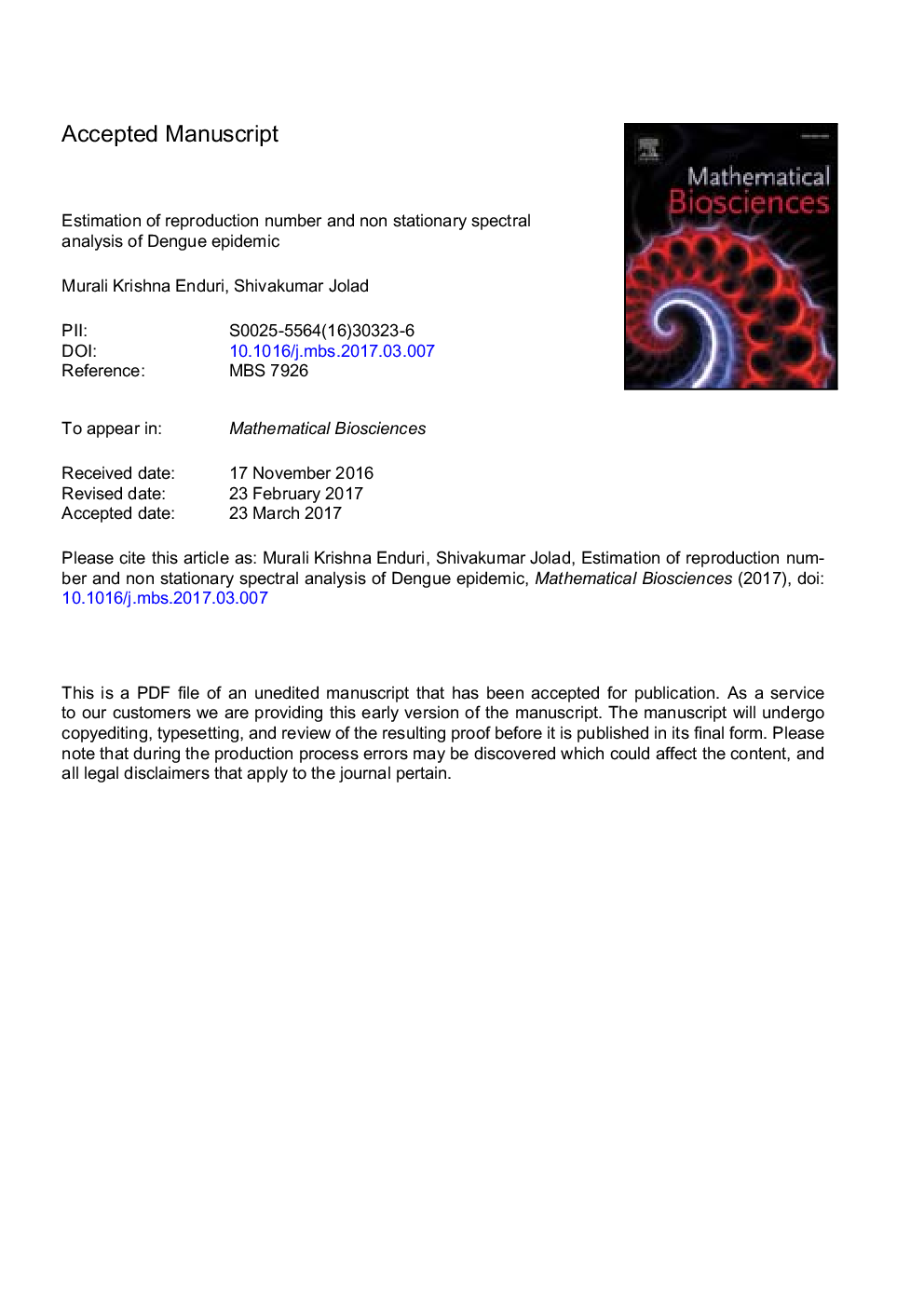| Article ID | Journal | Published Year | Pages | File Type |
|---|---|---|---|---|
| 5760466 | Mathematical Biosciences | 2017 | 17 Pages |
Abstract
In this work we analyze the post monsoon Dengue outbreaks by analyzing the transient and long term dynamics of Dengue incidences and its environmental correlates in Ahmedabad city in western India from 2005 to 2012. We calculate the reproduction number Rp using the growth rate of post monsoon Dengue outbreaks and biological parameters like host and vector incubation periods and vector mortality rate, and its uncertainties are estimated through Monte-Carlo simulations by sampling parameters from their respective probability distributions. Reduction in Female Aedes mosquito density required for an effective prevention of Dengue outbreaks is also calculated. The non stationary pattern of Dengue incidences and its climatic correlates like rainfall temperature is analyzed through Wavelet based methods. We find that the mean time lag between peak of monsoon and Dengue is 9 weeks. Monsoon and Dengue cases are phase locked from 2008 to 2012 in the 16 to maintain consistency make it “16 to 32” 32 weeks band. The duration of post monsoon outbreak has been increasing every year, especially post 2008, even though the intensity and duration of monsoon has been decreasing. Temperature and Dengue incidences show correlations in the same band, but phase lock is not stationary.
Related Topics
Life Sciences
Agricultural and Biological Sciences
Agricultural and Biological Sciences (General)
Authors
Murali Krishna Enduri, Shivakumar Jolad,
